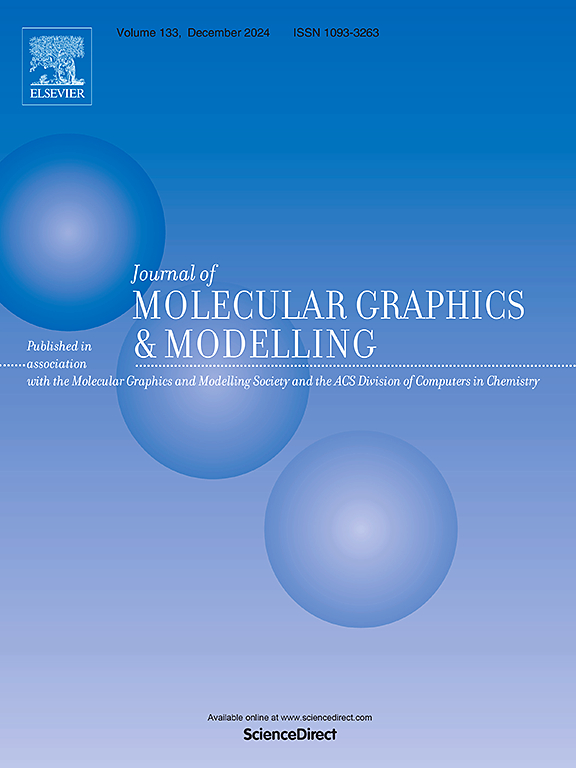Deciphering structural and electronic basis of silicon carbide quantum dots for photovoltaic performance: A DFT and molecular correlational analysis
IF 2.7
4区 生物学
Q2 BIOCHEMICAL RESEARCH METHODS
引用次数: 0
Abstract
This study elucidates the structural and electronic basis of silicon carbide quantum dots (SiQs) for enhanced photovoltaic (PV) performance. We designed and optimized donor-π-acceptor Si8C8H8-based SiQs using Density Functional Theory (DFT). Also, their relevant structures are collected from literature as a dataset to design their molecular descriptors by using RDKit, while their bandgaps were calculated by using PSI4 quantum chemical package. Their correlational analysis reveals that zero-order molecular connectivity (Chi0v) is the most influential parameter to strongly correlate with their maximum absorption (λmax). Notably, their λmax also exhibits strong correlations with Light Harvesting Efficiency (LHE) and Short-Circuit Current Density (Jsc) to indicate that longer λmax can enhance their PV performance. Moderate correlations exist between Max_Abs and Open-Circuit Voltage (Voc) and LogP and Voc. The current findings provide insights into how structure-property relationships can guide to design high-performance SiQ based PV materials.

解读光伏性能碳化硅量子点的结构和电子基础:DFT和分子相关分析
本研究阐明了碳化硅量子点(SiQs)用于增强光伏(PV)性能的结构和电子基础。利用密度泛函理论(DFT)设计并优化了基于si8c8h8的供体-π-受体SiQs。并从文献中收集其相关结构作为数据集,利用RDKit设计其分子描述符,利用PSI4量子化学包计算其带隙。相关分析表明,零级分子连度(Chi0v)是与最大吸收(λmax)密切相关的最重要参数。值得注意的是,它们的λmax也与光收集效率(LHE)和短路电流密度(Jsc)有很强的相关性,这表明更长的λmax可以提高它们的光伏性能。Max_Abs与开路电压(Voc)、LogP与Voc之间存在适度的相关关系。目前的研究结果为结构-性能关系如何指导高性能SiQ基光伏材料的设计提供了见解。
本文章由计算机程序翻译,如有差异,请以英文原文为准。
求助全文
约1分钟内获得全文
求助全文
来源期刊

Journal of molecular graphics & modelling
生物-计算机:跨学科应用
CiteScore
5.50
自引率
6.90%
发文量
216
审稿时长
35 days
期刊介绍:
The Journal of Molecular Graphics and Modelling is devoted to the publication of papers on the uses of computers in theoretical investigations of molecular structure, function, interaction, and design. The scope of the journal includes all aspects of molecular modeling and computational chemistry, including, for instance, the study of molecular shape and properties, molecular simulations, protein and polymer engineering, drug design, materials design, structure-activity and structure-property relationships, database mining, and compound library design.
As a primary research journal, JMGM seeks to bring new knowledge to the attention of our readers. As such, submissions to the journal need to not only report results, but must draw conclusions and explore implications of the work presented. Authors are strongly encouraged to bear this in mind when preparing manuscripts. Routine applications of standard modelling approaches, providing only very limited new scientific insight, will not meet our criteria for publication. Reproducibility of reported calculations is an important issue. Wherever possible, we urge authors to enhance their papers with Supplementary Data, for example, in QSAR studies machine-readable versions of molecular datasets or in the development of new force-field parameters versions of the topology and force field parameter files. Routine applications of existing methods that do not lead to genuinely new insight will not be considered.
 求助内容:
求助内容: 应助结果提醒方式:
应助结果提醒方式:


